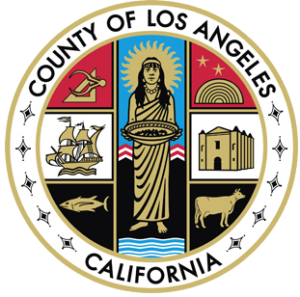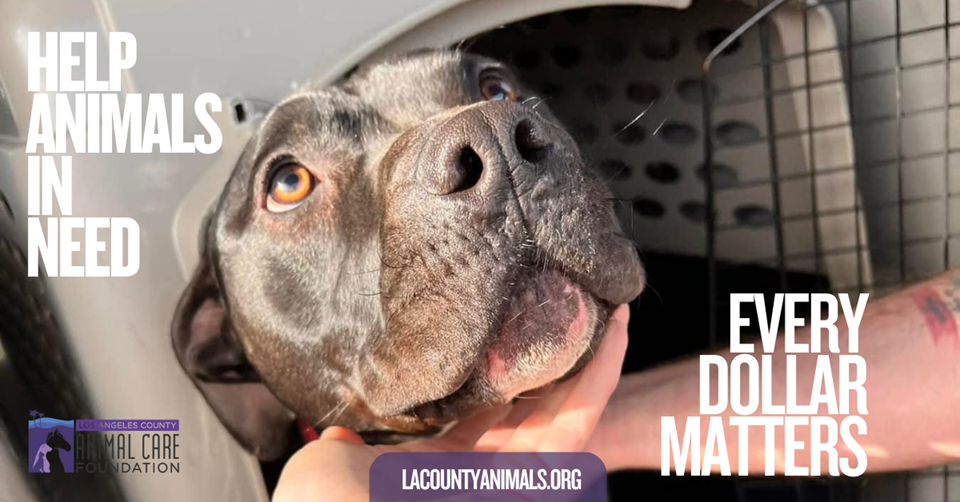News
Clarification of Misinterpretation of Indemnification Requirements


Marcia Mayeda, Director
April 8, 2025
Clarification of Misinterpretation of Indemnification Requirements
A recent commentary about the Los Angeles County Department of Animal Care and Control (DACC) has misinterpreted DACC policy regarding the placement of aggressive, potentially dangerous, and vicious dogs. This document addresses these inaccuracies.
One new policy requiring $2M liability insurance has been established in response to a 2024 published Court of Appeal decision requiring animal shelters to release dangerous and vicious dogs to qualified animal rescue groups upon their demand. Even if the dog has killed a person, the shelter is now required to release it under these conditions regardless of the significant threat to public and animal life, health, and safety.
DACC has established procedures for determining the best possible pathway for each individual animal and has identified a number of pathways, from the least restrictive (available for adoption without restriction to the public) to more restrictive placement options to ensure either the health or welfare of the animal or the health or welfare of the public (including people’s other pets). One of the most restrictive placement categories is “adoption partner only with an indemnity waiver.” This category consists only of those dogs that have demonstrated such a distinct and significant potential to cause harm that they are not suitable for placement with either the public or an animal rescue organization that has not shown it has sufficient resources and a plan to provide for the rehabilitation of the dog. Only about one half of one percent of the dogs we take in annually fall into this category.
We limit the placement of these dogs to animal rescue organizations called Adoption Partners with which we have an established working relationship and level of trust. That is because of the special needs of the dogs themselves and the potential for injury to others should these dogs not receive the attention and resources they need. If a well-intentioned but ill-equipped rescue was to take one of these dogs and it were to cause injury again, it would almost certainly result in the euthanasia of the dog in addition to the preventable injury or even death to a person or pet.
These dogs have all caused injury in the past and demonstrated that they are highly likely to do so again. The requirement to be one of our Adoption Partners and to indemnify the County before taking these dogs is not new. While we are constantly reviewing and updating our policies in which these requirements are embodied, these requirements have been in place for at least ten years.
While there are many wonderful animal rescue organizations of all sizes all across the country, in California the only qualification to become an animal rescue organization is to file the paperwork and pay the fees to become a corporation. Animal rescue organizations therefore come with all levels of expertise and resources. We owe it not only to public safety, but also to the dogs with the history of aggression to ensure that whoever adopts these dogs from us is prepared to deal with both the needs of the dog and of the community.
Similarly because of the inordinately high risk of future injury to others that these dogs pose, we balance our desire that they be rehabilitated with the need to protect the County from the costs of the litigation that results from any future incidents of injury by these dogs. We are obligated to safeguard the taxpayer dollars that constitute our budget so those dollars can be spent on caring for other animals and reducing unnecessary euthanasia. Even when we prevail, litigation is expensive and a single judgment against DACC, such as we have seen in the millions of dollars with other sheltering organizations, can have devastating effects on our budget. That would severely inhibit our ability to maintain and care for the animals we admit into our care, resulting in increased and preventable euthanasia of many animals.
The need for liability insurance is a fact of life. We all must have it just to drive a car in this State and businesses must have liability insurance to protect themselves. DACC is sympathetic to the challenges facing animal rescue organizations, including the cost and availability of liability insurance. For that reason DACC does not require evidence of liability insurance to be one of our Adoption Partners. We only require liability insurance when the partner organization is adopting one of those dogs that is subject to an indemnity waiver and poses a higher risk of harm to the public and risk of litigation due to harm it can cause.
The requirement that Adoption Partners have liability insurance to adopt one of these “indemnity waiver dogs” is designed to protect both the partner rescue organization and the taxpayers of the County. If a dog subject to the indemnity waiver causes injury to a person or pet, it is almost a certainty that both the rescue organization and the County will be sued. The rescue partner is then obligated to “indemnify” or pay for the costs incurred by the County. Their liability insurance will usually pay those costs for the rescue organization. If the partner organization does not have liability insurance, they must pay the County’s fees “out of pocket,” which can quickly bankrupt the animal rescue organization, leaving the injured party and the taxpayers left with no way to recover their losses. That would not be fair to either the injured party or the taxpayer. Nor does it help anyone or any animals when the rescue organization is bankrupted and ceases to exist.
DACC has been involved in litigation stemming from severe injury caused by partner organizations mishandling of “indemnity waiver dogs” and has seen how high the claims for damages can go. The $1M per incident level of insurance DACC requires is not excessive given the awards for damages that are possible in these cases and is an industry standard for liability insurance coverage.
Rescue-to-Rescue Transfers
DACC cares about every animal in its care. We value the lives of each animal above an arbitrary statistic. Just as many animal rescue organizations won’t adopt out their animals to “just anyone,” we want the animals in our care to go to caring homes. We work with trusted Adoption Partners that are similarly committed to the welfare of the animals they adopt from us. It is not in the best interest of any animal to be passed from one cage or kennel to another. We expect that when an organization adopts an animal from us, they are committed to the care of that animal until they can find it a caring home. DACC recognizes that in some cases it is appropriate to allow rescue- to-rescue transfers and allows it in those cases. But all too often when an animal is passed repeatedly from one organization to another it is neglected or even exploited and it almost always significantly increases the animal’s stress which can lead to illness, neurosis, or behavior problems that further limit successful permanent placement options. Our prohibition against unapproved rescue-to-rescue transfers has been in place for at least ten years to protect the wellbeing of animals that have come into our care.
Six-Month Get Acquainted Period for New Adoption Partners
It takes time to earn and build trust. DACC works to build and maintain public trust every day and the job is never done. We ask animal rescue organizations who want to partner with us to be professional, compassionate, and provide proper care for the animals in their care. We do so because we care about what happens to the animals we admit into our care.
When an animal rescue organization applies to become and is accepted as a partner organization, we don’t know whether they will perform to our expectations and standards. Many times, these new partners come to us with little or no history that will demonstrate their reliability. It takes time to get to know them and to develop the level of trust we need to give them a high-risk “indemnity waiver” dog or to grant them an exemption from spay/neuter deposit fees.
Animal rescue work is a marathon, not a sprint. If an organization expects to enter the race for the purpose of saving one particular dog that poses particularly heightened challenges to permanent placement, that is an indicator that they may lack the experience and patience needed to adequately and responsibly rehabilitate the dog and are more likely to place other animals or people at risk.
For these reasons some privileges of being an Adoption Partner are bestowed after the animal rescue organization has been an Adoption Partner for six months and demonstrated their commitment to DACC’s standards of care for animals.
Allegations of Rising Euthanasia Rates
Some have claimed that euthanasia rates are rising because of DACC’s new indemnification waiver policy. But the requirement for the indemnity waiver for those dogs with demonstrated behaviors and documented history of causing injury is not new. Nor has it slowed the process or limited responsible rescue partner organizations from adopting these dogs and investing the time and resources needed to rehabilitate them. DACC works with its partners who have expressed interest in rehabilitating an “indemnity waiver dog,” often extending planned timeframes to make adoptions happen.
Euthanasia rates are a product of many factors including but not limited to the lack of availability of low-cost spay and neuter, inadequately regulated backyard breeding, and the increasing costs of veterinary care. Euthanasia rates are also influenced by the availability of financial resources to provide medical care for ongoing or serious conditions.
Concerns About “Hayden’s Act”
California law states that, “It is the policy of the state that no adoptable animal should be euthanized if it can be adopted into a suitable home” (Civil Code Section 1834.4). It states the same goal for treatable animals and defines both. This language was introduced to State law in what has become known as the Hayden Bill (SB 1785 in 1998), which temporarily extended holding periods for stray animals and helped shift public focus on reducing unnecessary euthanasia of animals that could be placed in caring homes. These goals are shared by animal shelter organizations, including DACC, which has many policies designed to minimize unnecessary euthanasia.
Recently some have expressed concern that DACC’s requirement for an indemnity waiver and liability insurance when adopting “indemnity waiver dogs” that have already caused injury and demonstrated that they are highly likely to do so again could violate State law. DACC is fully committed to complying with State law in all cases. In fact, it is our insistence that those organizations with which we partner also follow applicable law that distinguishes our Adoption Partners from other organizations of undetermined quality.
Recent case law has confirmed that DACC and other municipal shelters have discretion in qualifying organizations as Adoption Partners. This is vital to our ability to protect taxpayer funds from being wasted on needless and preventable payouts resulting from foreseeable harm by dogs that have demonstrated a propensity to injure others.
Data Transparency
One article has claimed that DACC policies alter euthanasia rates by “euthanizing behaviorally challenged dogs under the pretense of liability concerns.” This allegation fails to recognize that euthanasia for behavior concerns is and has been a reported outcome in DACC statistics. The reason why an “indemnity waiver dog” was not adopted and was ultimately euthanized does not change whether it is reported as having been euthanized or the category under which it is listed. To claim that indemnity waiver or insurance requirements alter DACC’s euthanasia reporting has no basis in fact. DACC is transparent about its euthanasia rates and general animal statistics. This information may be found on DACC’s website at www.animalcare.lacounty.gov.
Call to Action
We all agree that more needs to be done for animals. Recklessly placing dogs known to be dangerous with unregulated and unsupervised organizations that place them in unsuspecting neighborhoods where our children play and we walk our beloved pets is not the answer. Doing more for animals in shelters means working to reduce the number of animals coming into shelters, promoting spay/ neuter of pets, providing intervention programs to keep pets and families together, and funding shelters so they can provide more and better veterinary care, have more space, and enforce laws that protect animals. It means working together on common goals of preventing unnecessary euthanasia and realizing that those performing euthanasia are not to blame for it happening.
s:/dir sec/misc. corres/clarification of indemnification requirements for indemnity waiver dogs


